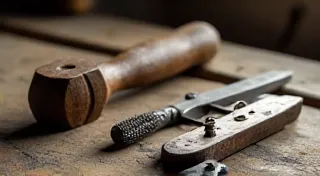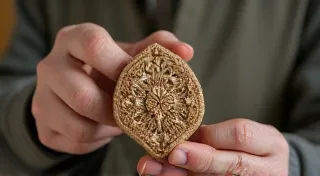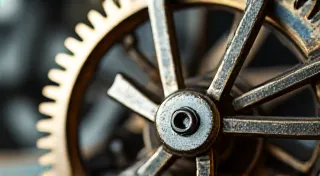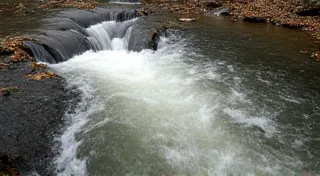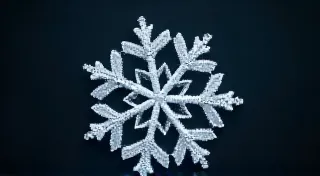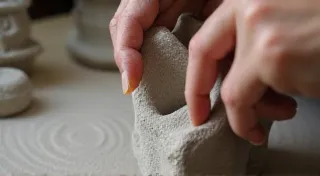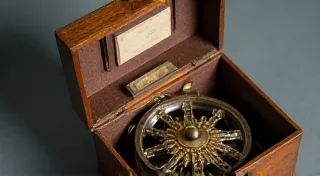The Miniature Railroad Hobbyist
A Resource for the Serious Railroading Enthusiast
Beyond the Starter Kit: Elevating Your Miniature Railway Hobby
Welcome to The Miniature Railroad Hobbyist, a haven for dedicated enthusiasts whose ambitions reach far beyond assembling pre-packaged starter sets. This isn’t about simple track loops; it’s about crafting miniature worlds brimming with detail, realism, and compelling narratives. We cater to the model railroader who’s already familiar with the basics and seeks to delve into advanced techniques, tackling complex challenges, and achieving a level of artistry that truly captures the spirit of the prototype. We’re here to help you deepen your expertise, whether your passion lies in creating stunning miniature railway scenery, meticulously planning your track layout, mastering model railroading troubleshooting, preserving the authentic look of aged equipment, or, most importantly, embarking on the ambitious journey of scratch-building your own rolling stock.
The allure of miniature railways extends far beyond the satisfying click of a locomotive on the rails. It’s a pursuit that intertwines historical research, meticulous craftsmanship, a deep appreciation for the romance of railroading, and often, a considerable investment of time and resources. It’s a hobby that combines engineering principles, artistic expression, and a dash of historical fascination. We’re here to help you deepen your expertise, whether your passion lies in creating stunning miniature railway scenery, meticulously planning your track layout, mastering model railroading troubleshooting, preserving the authentic look of aged equipment, or, most importantly, embarking on the ambitious journey of scratch-building your own rolling stock.
Mastering the Fundamentals: Track Planning, Engine Maintenance, and Scenic Design
Creating a realistic and reliable layout starts with careful n scale track planning. Derailments and operational hiccups can quickly derail your enjoyment, so understanding the intricacies of trackwork, grade crossings, turnout operation, and signaling is essential. It's not enough to simply lay track; you must understand how trains interact with the infrastructure, how to achieve smooth transitions between grades, and how to manage curves and easements for safe and realistic operation. Consider the prototype – how did railroads handle grades, how were turnouts designed, and what signaling systems were employed? Researching your chosen era and location will inform your track planning and add a level of authenticity that elevates your layout from a toy train set to a miniature recreation of a bygone era. Advanced track planning involves incorporating DCC (Digital Command Control) for independent locomotive control, sound effects, and realistic operation, ensuring The Clockmaker’s Gears: Optimizing Your N Scale Track System for Reliability.
Regular ho scale engine maintenance is equally crucial. Locomotives are complex machines, even in miniature, and neglecting maintenance will lead to breakdowns and frustration. This includes lubricating axles, cleaning gears, checking electrical connections, and ensuring smooth operation of valve gear. Understanding the workings of different locomotive types – steam, diesel, and electric – is essential for effective maintenance. Preventative maintenance schedules can save you considerable time and expense in the long run. Documenting your process diligently using The Ledger of Details: Documenting and Perfecting Your Railroading Craft ensures consistency and allows for continuous improvement.
The creation of a compelling landscape is a cornerstone of a believable miniature railway. Railroad diorama techniques go far beyond simply gluing down a sheet of felt. It involves sculpting terrain, creating realistic rock formations, adding vegetation, and replicating the effects of weathering. Consider the prototype – what type of vegetation grows in the area, what are the dominant rock types, and what is the overall topography? Adding details such as fences, buildings, and figures adds life and realism to your diorama. Advanced diorama techniques involve using materials such as plaster, foam, and fiberglass to create realistic terrain – learn the art of Sculpting the Landscape: Mastering Terrain Techniques for Realism. Creating a sense of depth and scale is crucial for creating a convincing diorama. Mastering the art of perspective and using forced perspective techniques can significantly enhance the visual impact of your layout.
The Art of Scratch-Building and Detailing
For the truly ambitious, the realm of scratch built train cars offers unparalleled creative control. This goes far beyond modifying commercially available kits; it's about creating rolling stock entirely from raw materials – wood, plastic sheet, metal strip – using detailed plans or inspired by prototype examples. Our comprehensive The Alchemist's Workshop: Scratch-Building Rolling Stock from Raw Materials delves into the fundamental skills and techniques, starting with basic woodworking and plastic modeling, progressing to advanced techniques such as CAD drawing, laser cutting, and 3D printing. Creating accurate drawings, selecting appropriate materials, mastering the intricacies of resin casting with The Alchemist’s Crucible: Resin Casting for Custom Railroading Components, and replicating authentic details are all key to success. Achieving realism often involves mastering the art of miniature train weathering, adding grime, rust, and wear to simulate the effects of time and exposure.
Refining your skills further, The Artisan's Touch: Advanced Scratch-Building Techniques for the Dedicated Modeler provides insights into achieving a truly professional level of craftsmanship. This dedication is further enhanced by a deep understanding of historical context, gained through The Cartographer's Compass: Finding Inspiration in Prototype Railroad History and meticulous documentation using The Ledger of Details. A comprehensive railroad detailing guide is also invaluable for adding those essential finishing touches, capturing the nuances of real-world equipment.
Preserving Authenticity and Telling Stories
Whispers in the Rails: Crafting Narrative Dioramas and The Flow of Time: Designing for Dynamic Operations and Narrative explore how to evoke emotion and create a believable world. Consider the lighting and ambiance – Illuminations: Mastering Lighting Techniques for a More Believable Layout – to further immerse the viewer. Don't forget the details – A Field Guide to Miniature Flora: Adding Botanical Realism to Your Diorama helps add layers of believability. For those new to layout creation, a detailed layout design guide can provide invaluable assistance in planning and executing a visually stunning and operationally sound model railroad.
Maximizing Impact and Embracing Challenges
Even with limited space, you can create a stunning layout – The Geometry of Wonder: Maximizing Visual Impact in Limited Spaces provides valuable strategies. Understanding the principles of color theory – Chromatic Harmonies: Integrating Color Theory into Diorama Design – can elevate your diorama’s visual impact. Addressing common pitfalls and troubleshooting electrical issues – The Silent Orchestra: Troubleshooting Electrical Gremlins – is an essential part of the process. And finally, always remember the importance of meticulous planning and documentation - revisiting The Ledger of Details.
Join the Community
The Miniature Railroad Hobbyist is more than just a website; it’s a community of passionate model railroaders. We invite you to explore our resources, share your experiences, and connect with fellow enthusiasts. Welcome aboard!

